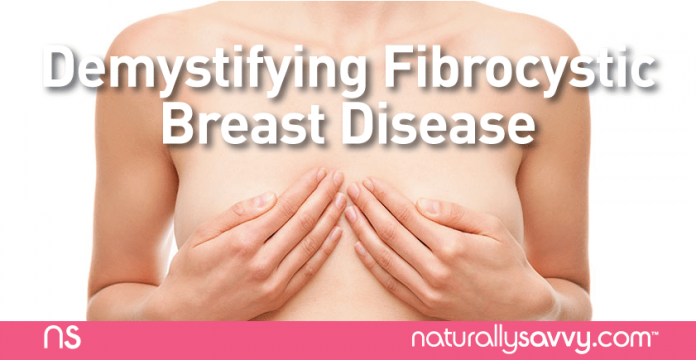
As a clinical breast thermographer I see more and more fibrocystic breast cases than any other abnormality of the breast. Cysts are likely to develop in women ages 30 to 50; however, the youngest patient that I've evaluated was a 12-year-old with multiple cysts in her breasts. In fact, I am seeing this condition increasingly in younger and younger women. One has to ask the question: “what would contribute to the rise of this condition so early in life, and what would happen to these girls and women over the years if they continue on this path”.
The symptoms of fibrocystic breast disease (FBD) may range from mildly annoying in some women to extremely painful in others. The severity of these symptoms may range from month to month in the same woman. Some women feel that their breasts become so painful that they can't bear to touch them and will have trouble sleeping at night due to the pain. This disease itself is not dangerous, but it does complicate breast self-examination since it is difficult to identify a new lump amongst existing ones. Consequently, the probing, squishing, x-raying and routine biopsies that many women experience due to the fibrocystic structure of their breasts may in fact result in more trauma and increase the risk of developing malignancy.
In my opinion, synthetic hormones in our environment along with growth hormones and estrogens that are fed to livestock mimic estrogens that encourage the proliferation of this condition in most women. Young girls are beginning to menstruate at the age of 10, whereas the age of menstruation began between the ages of 14 and 16 just one generation ago. Women also continue with their menstrual cycle until the age of 52-54, rather than at age 50 or younger a generation ago. This unprecedented extension of the menstrual cycle has a devastating effect on women, specifically on hormonal areas such as breasts and ovaries. The fluctuating levels of estrogen account for the cystic nature of inflammation and swelling common with PMS sufferers.
Diets high in fat, with meat and dairy products that are loaded with xenoestrogens have a role in contributing to the formation of painful lumps. Caffeine in coffee, colas and so called ‘energy drinks', theophylline in tea, theobrimine in chocolate have been shown to contribute to this inflammation and should be eliminated from the diet.
Women with a history of constipation or irregular bowel movements are several times more likely to have cysts than those who have at least one bowel movement per day. It is important to point out that those who regularly consume a plant based diet excrete two to three times more detoxified estrogens than those who eat meat; carnivores thus tend to reabsorb excess estrogen through their intestinal wall. Patients that have cysts and fibroadenoma in their breast commonly will have cysts and nodules in other parts of their anatomy, of course the same areas that are hormonally affected along the endocrine tree including thyroid, ovaries, and uterus.
Many terms are used to describe certain conditions of the breast:
Fibroadenomas are tumors that form in the tissues outside the milk ducts. They generally feel smooth and firm, with a somewhat rubber-like texture. Typically a fibroadenoma is not attached to surrounding tissue, and will move slightly when touched. They are most commonly found in adolescents and women in their early 20's but can arise at any age.
Cysts are fluid-filled sacs in the breast. They probably develop as ducts become clogged with old cells in the process of normal emptying and filling. Cysts usually feel soft and round or oval. However, a cyst deep within the breast may feel hard, as it pushes up against firmer breast tissue. A woman with a cyst may experience pain, especially if it increases in size before her menstrual cycle, as many do.
Fibrocystic breast disease is a benign (non cancerous) condition characterized by round lumps that move freely within the breast tissue and generally expand and shrink with the onset and after menstrual cycle. It is estimated that as many as 40% of all women in North America have fibrocystic breast disease. Fibrocystic tissue usually presents with hypothermia (cooling) on a thermographic image.
A cancerous growth in the breast is often not tender and not freely movable when touched. During thermographic evaluation, high risk areas often present with an asymmetrically hot area along with considerable warming during functional challenge.
Read more about breast cancer.
A number of other breast problems that are benign or non-cancerous may be placed under the heading of fibrocystic conditions. These include disorders that may lead to breast inflammation (mastitis), infection, nipple discharge, dilated milk ducts, milk-filled cysts, wart-like growth in the duct, and excess growth of fibrous tissue around the glands. Many women have had several invasive procedures over the years such as needle aspirations and biopsies to investigate these conditions. One must ask if it is possible to prevent or even reverse this problem in the first place?
Fibrocystic disease should be treated with the understanding that it is a multifactorial problem that requires a multi-modal approach.
This article was written by Dr. Alexander Mostovoy and originally appeared on thermographyclinic.com










